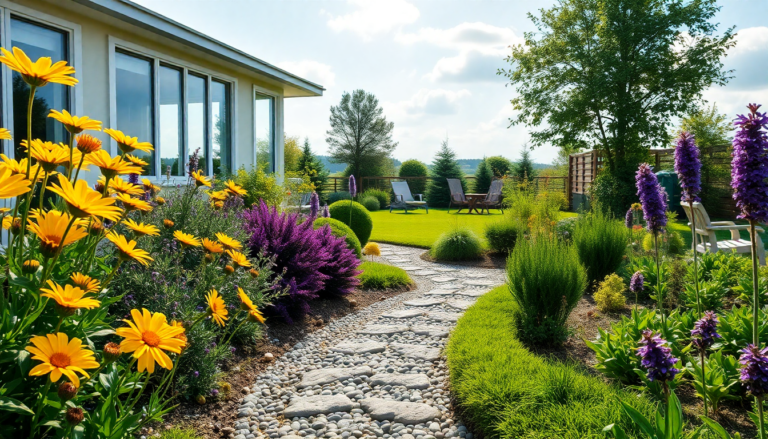Argomenti trattati
Creating a captivating garden isn’t just about planting flowers; it’s truly an art form that blends creativity with strategic planning. Whether you’re a budding gardener or a seasoned pro, grasping the principles of garden design can turn your outdoor space into a personal oasis. From picking the right plants to crafting the perfect layout, let’s dive into the essential strategies for cultivating a stunning garden that complements your home and lifestyle.
Trendy Garden Design: What’s New?
Garden design trends are always changing, influenced by shifts in lifestyle and a growing awareness of environmental issues. One major trend we’re seeing is the move towards sustainable gardening practices. Homeowners are increasingly embracing native plants that need less water and maintenance, creating an eco-friendly paradise. Plus, edible gardens are becoming all the rage, letting you grow your own veggies and herbs while sprucing up your yard.
But that’s not all! The trend of incorporating outdoor living spaces is on the rise, too. As we find ourselves spending more time at home, creating inviting areas for dining and relaxation is becoming essential. Think comfortable seating, outdoor kitchens, and even fire pits that make your garden usable year-round. By blending these elements with natural landscaping, you can create a seamless flow between your indoor and outdoor living spaces. Isn’t that what we all want in our homes?
The Numbers Behind Garden Design Success
Just like in digital marketing, analyzing how well your garden design performs is key. Important metrics to keep an eye on include plant survival rates, seasonal bloom cycles, and the overall health of your garden. For example, if some plants are thriving while others are struggling, it might be time to reassess your soil quality or the sunlight exposure in specific areas. By tracking these metrics over time, you can gain valuable insights into what works best for your unique environment.
In my experience, leveraging data can significantly boost your gardening efforts. Garden management apps, for instance, can help you monitor plant health and remind you when it’s time to water, leading to better outcomes. Plus, documenting your garden’s progress with photos and notes can serve as a handy case study for future improvements. Just like we analyze customer journeys in marketing, keeping track of your garden’s evolution can pave the way for a more successful design process.
Case Study: Transforming a Backyard into a Garden Retreat
Let’s take a look at a homeowner who turned a small, neglected backyard into a vibrant garden retreat. Initially, the space was overrun with weeds and lacked any real structure. The homeowner wisely decided to hire a landscape designer who took a close look at the site—considering factors like sunlight, soil type, and the homeowner’s personal lifestyle needs.
The result? A thoughtfully planned layout featuring a mix of perennial flowers, shrubs, and a dedicated vegetable patch. Throughout the first year, the homeowner meticulously tracked the growth and blooming phases of each plant. They discovered that certain flowers attracted pollinators, enhancing the ecosystem, while others thrived in shaded spots.
By the season’s end, the garden not only flourished, but the homeowner also found themselves spending significantly more time outdoors, enjoying family meals and peaceful evenings in their new space. This case beautifully illustrates the power of combining expert advice with personal attention to detail, leading to a successful and enjoyable gardening experience.
Practical Tips for Implementing Your Dream Garden
Ready to create a garden that reflects your unique style? Start by defining your goals. Do you envision a space for entertaining, growing vegetables, or a serene retreat? Next, assess your space, taking note of sunlight exposure, existing plants, and any potential obstacles. This groundwork will guide your design decisions.
Consider applying the principles of layering in your garden design. This means placing taller plants at the back and shorter ones in front to create depth and visual interest. And don’t forget about pathways and seating areas—they invite exploration and relaxation.
Finally, always keep an open mind to experimentation. Gardening is a dynamic process; what thrives one season may not the next. Regularly monitor your garden’s performance, and be ready to adapt your strategies based on what you learn. Your garden journey might just surprise you!

